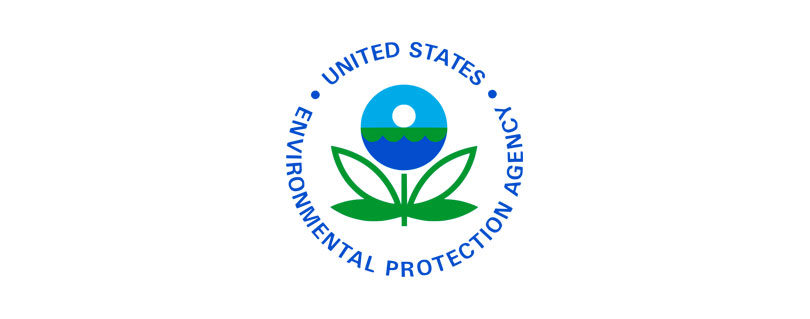Biden-Harris Administration Announces New Cleanup Project in Vermont
Publilshed by the U.S. Environmental Protection Agency (EPA)
BOSTON (Feb. 10, 2023) – Today, the U.S. Environmental Protection Agency (EPA) announced the second wave of approximately $1 billion in funding from President Biden’s Bipartisan Infrastructure Law to start new cleanup projects at 22 Superfund sites, including the Pike Hill Copper Mine site in Corinth, and expedite over 100 other ongoing cleanups across the country.
Thousands of contaminated sites exist nationally due to hazardous waste being dumped, left out in the open, or otherwise improperly managed, including in manufacturing facilities, processing plants, landfills, and mining sites. Superfund cleanups help transform contaminated properties and create jobs in overburdened communities, while repurposing these sites for a wide range of uses, including public parks, retail businesses, office space, residences, warehouses, and solar power generation. In addition, these sites can support natural areas, parks, and recreation facilities, providing greenspace and safe places for families to play outside.
“Thanks to President Biden’s historic investments in America, we are moving faster than ever before to progress clean up at contaminated sites – from manufacturing facilities to landfills – in communities across the country,” said EPA Administrator Michael S. Regan “But our work is not yet finished – we’re continuing to build on this momentum to ensure that communities living near many of the most serious uncontrolled or abandoned releases of contamination finally get the investments and protections they deserve.”
“This Bipartisan Infrastructure Law funding targets the much-needed clean-up of legacy pollution that’s harmful to our health and the environment,” said EPA New England Regional Administrator David W. Cash. “We look forward to the start-up and completion of this important work.”
“Thanks to the historic Bipartisan Infrastructure Investment and Jobs Act, folks in Corinth will get a helping hand to clean up the long-abandoned Pike Hill Copper Mine and bring an end to more than 100 years of sulfuric acid contamination,” said U.S. Senator Peter Welch. “Superfund remediation protects our environment and the health of the surrounding community. It’s essential work, and I’m grateful for all EPA has done to make this possible. I look forward to monitoring the work in Corinth as they remediate the Pike Hill site.”
“Keeping environmental justice at the forefront of rebuilding America’s infrastructure means a brighter future for us all – a key pillar of the Bipartisan Infrastructure Law. It is helping transform our communities by revitalizing our roads, bridges, and waterways,” said U.S. Representative Rebecca Balint. “This project is another example of the impact of this bold investment in infrastructure. Cleanup at this mine site in Corinth is so important to keeping Vermonters healthy and our water clean.”
The cleanup approach includes the excavation of about 65,000 cubic yards of mine waste and tailing and consolidation into a common area where the material can be isolated under a low permeability cover system. A section of Pike Hill Brook will be excavated and reconstructed. The cover system is expected to extend over about 3-4 acres. Four acres area of mine waste will be stabilized in-situ using lime, soil, and organic amendments to avoid disturbing bat habitat. Excavated areas will be stabilized and any necessary wetland mitigation will be performed after the excavation is complete.
The $1 billion investment announced today is the second wave of funding from the $3.5 billion allocated for Superfund cleanup work in the Bipartisan Infrastructure Law. With the first wave of funding announced in December 2021, EPA deployed more than $1 billion for cleanup activities at more than 100 Superfund National Priorities List sites across the country. Thanks to this historic funding, EPA started 81 new cleanup projects in 2022, including projects at 44 sites previously on the backlog. By starting four times as many construction projects as the year before, EPA is aggressively bringing more sites across the country closer to finishing cleanup. For example, in Evansville, Indiana, EPA continued to reduce exposures to lead and arsenic in soil in the neighborhoods of the Jacobsville Neighborhood Contamination site by starting the next phase of cleaning up contaminated residential soils.
In addition to funding cleanup construction work, this investment is enabling EPA to increase funding for and accelerate essential work needed to prepare sites for construction and ensure that communities are meaningfully involved in the cleanup process. In 2022, EPA more than doubled its spending for Superfund pre-construction activities like remedial investigations, feasibility studies, remedial designs, and community involvement.
EPA is committed to carrying out this work in line with President Biden’s Justice40 Initiative by advancing environmental justice and incorporating equity considerations into all aspects of the Superfund cleanup process. This will help ensure that historic and ongoing impacts of contamination on overburdened communities are fully considered and addressed. Out of the 22 sites to receive funding for new cleanup projects, 60% are in communities with the potential for environmental justice concerns based on data from EJSCREEN, an environmental justice mapping and screening tool that provides EPA with a nationally consistent dataset and approach for combining environmental and demographic socioeconomic indicators.
Background:
In 1980, Congress passed the Comprehensive Environmental Response, Compensation and Liability Act, known as Superfund. The law gave EPA the authority and funds to hold polluters accountable for cleaning up the most contaminated sites across the country. When no viable responsible party is found or cannot afford the cleanup, EPA steps in to address risks to human health and the environment using funds appropriated by Congress, like the funding provided by the Bipartisan Infrastructure Law.
For more information on each site, please visit: https://www.epa.gov/superfund/superfund-sites-new-construction-projects-receive-bipartisan-infrastructure-law-funding
To see highlights from the first year of Bipartisan Infrastructure Law funding at Superfund sites, please visit: https://www.epa.gov/infrastructure/cleaning-superfund-sites-highlights-bipartisan-infrastructure-law-funding
For more information about EPA’s Superfund program, please visit: https://www.epa.gov/superfund
Read the full article at: https://www.epa.gov/newsreleases/biden-harris-administration-announces-new-cleanup-project-vermont



